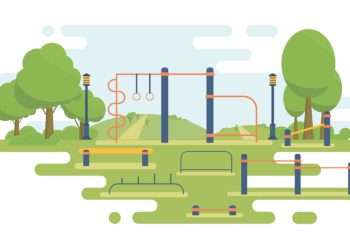There are many factors to consider regarding the design and construction of running tracks and sports fields, but one aspect that will ensure track longevity is addressing the need to evacuate water off the track surface. A track left with standing water causes major damage to the surface over time, delaminating the synthetic surface and asphalt base and severely shortening its usable life.
Surface drainage options include area drains, french drains/open swale or modular perimeter trench drains. Area drains and french drains have an irregular surface, are prone to ponding, difficult to maintain and have poor hydraulic performance. A modular perimeter trench drain is versatile and quick and cost-effective to install while being highly efficient and easy to maintain. These five steps will help to identify the proper trench drainage system for your track/field facility and ensure sporting events to continue without delay or cancellation.
1. Hydraulics – It’s important to evaluate the hydraulic performance of the trench drain, or the ability of the drain to evacuate water without flooding.
2. Design
- Loading – Identify what type of traffic the system will need to accommodate. Will it just be athletes or will maintenance equipment or emergency vehicles need to be able to go across it? If the facility may be used for other events, perhaps different traffic accommodations should be considered.
- Layout – Depending on the site, a perimeter, linear track drainage system may be ideal. It’s also important to note any other facilities or amenities surrounding the track, such as bleachers or retention areas, as runoff or overflow from these areas may flow onto the track surface. Separate drainage may be needed between these areas and the track.
- Installation Methods – Regardless of product selection, a poor installation will cause drainage systems to fail. Factors to address include evaluation of the ground conditions, using the correct pipe size and outlet connections and using correct elevations when product is installed.
3. Material – Modular sport trench systems are available in polymer concrete or plastic materials. While the drain body may not be visible once installed, the choice of material is important when evaluating loading requirements, ease of installation (product weight) and the effect of climate changes on the material, such as in freeze-thaw environments.
4. Aesthetics/Security – The facility or type of events may dictate an aesthetic requirement. Several grate designs and materials are available. For a grated drainage system, a number of grate locking options are available, depending on the need for easy removal for maintenance.
5. Legislative/Safety – Depending on traffic conditions, it may be necessary to comply with ADA requirements. Other safety issues may need to be considered for the facility, such as needing to accommodate high heels or bicycle traffic.
Jaclyn Revis, Marketing Services Manager for ACO Polymer Products, Inc., a leader in the design and manufacturing of ACO Sport polymer concrete trench drainage for athletic facilities and other applications, with manufacturing and sales facilities worldwide. For more information call 888-710-1006 or email info@acousa.com.











It’s amazing what a difference something like drainage can make. When you run across the field the last thing you think of is the thought process that went into designing the drainage system.